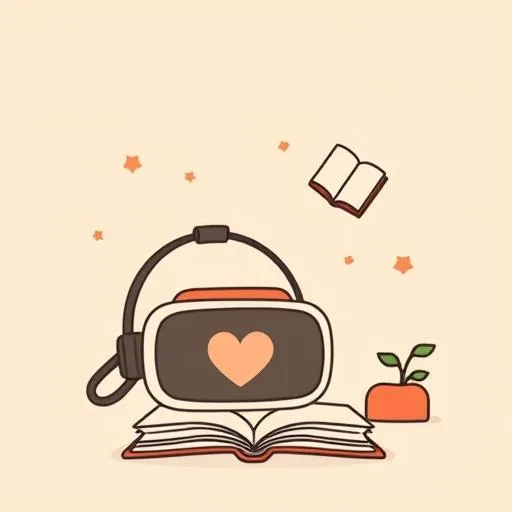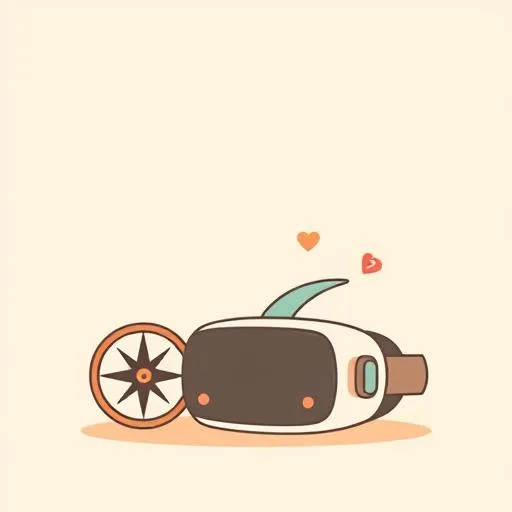
Have you ever stepped outside on a crisp, clear day and felt like you could see forever? That’s what reading about the winners at Venice Immersive 2025 felt like—it was like cracking open a door to the future of how we tell stories. And let me tell you, it’s not just about flashy tech or cool games. It’s about something deeper, something at the heart of what we want our kids to grow up understanding: the power of empathy. These are stories you don’t just watch—you step inside them. And the possibilities? Honestly, they’re pretty incredible.
How Can VR Stories Like ‘Less Than 5 Gr of Saffron’ Build Empathy?

When I read about one of the winning pieces—‘Less Than 5 Gr of Saffron’—I didn’t expect to be so moved. It’s a seven-minute virtual reality experience without a single word of dialogue. Instead, we’re drawn into the quiet, sensory moment of a woman cooking saffron rice, trying to soothe her homesickness. But that simple gesture opens the door to a flood of painful memories tied to a tragic loss. It’s a powerful look at migrant experiences, told through something deeply human—an everyday act that suddenly pulses with meaning.
This is so much more than entertainment. It’s a way to feel. We’re always trying to explain big emotions to our kids—loss, longing, belonging—through words and books. But imagine if they could catch just a glimpse of what those feelings might really be like, in a safe, guided way. Awarded the Venice Immersive Special Jury Prize, this piece shows that technology can be a door—not to escape, but to connect. It’s about sparking that emotional understanding that brings stories to life in a kid’s heart.
What Does Immersive Storytelling Mean for Kids’ Learning?

The whole showcase at Venice Immersive is pointing toward a powerful shift. The Grand Prize winner, ‘The Clouds Are 2,000 Meters Up,’ and the Achievement Prize winner, ‘A Long Goodbye,’ are part of a wave of experiences that don’t just invite us in—they transport us. It’s like the ultimate “walk a mile in their shoes” moment. No more just *telling* our kids about kindness or history—we can let them *live* it. A virtual trip to ancient Athens instead of reading a textbook? Oh, yes please. That’s the kind of spark that makes learning stick.
This isn’t about swapping books or conversations for gadgets. Not even close! It’s about giving those experiences a richer, more personal layer. Think of it like helping your kid understand what a whale feels like mid-dive—not just by describing it, but by floating there in the ocean with it. That’s a memory they’ll carry. That’s how curiosity and compassion grow. What if every child could stretch their understanding of the world—emotionally, not just intellectually? That’s the kind of future we get to help shape.
How Can Parents Guide Kids Through Immersive Tech Experiences?

Alright, it *does* sound a little overwhelming at first. Do we really need *more* tech in our lives? Totally understandable! But here’s the key: this isn’t about being tech-savvy. This is about being emotionally present. We don’t have to be the experts. We have to be the guides. Just like preparing for a family adventure, it’s not just about the experience—it’s about what we talk about before and reflect on afterward.
That’s where you come in. When your child puts on that VR headset, you’re not just sitting by. You’re asking the magic questions. “What did that feel like?” “What stuck with you?” “Why do you think that moment was important?” This becomes your time to gently help them make sense of what they saw and how it connects to their own life. It’s teaching them how to watch, listen, and care in the digital world without losing touch with what matters most. That’s emotional literacy—and trust me, that’s a skill worth nurturing.
How Can Everyday Moments Foster Empathy at Home?

Truth is, we don’t need VR to build empathy every day—though it certainly helps! The heart of connection lives in the little moments. Like when we set the table together and ask about each other’s day. Or when we try a recipe from another country and wonder out loud what life might be like there. One evening, we made kimchi fried rice and talked about the families who passed down that recipe through generations. Small stuff, but it lingers.
Let’s take a page from that saffron story—it found its power in the simplest actions. We can do the same by making space for stories at home—real ones, our own and others’. Whether we’re cooking, walking, or just chatting over tea, we’re planting seeds of empathy. And over time, those little moments grow into a deep understanding of people, cultures, and the many ways we all belong in this world.
What Does the Future Hold for Empathy and Technology?
Looking at the work coming out of Venice Immersive, I feel less worry and more wonder. We’re standing on the edge of this amazing new way of storytelling—one that invites us to feel with our whole hearts, not just our minds. Yes, tech is changing fast. But when we guide our kids through it with curiosity, care, and real talk, it has the power to bring us closer, not push us apart.
Imagine a world where our children can not only hear about someone’s journey but step into it for a moment. When guided with love, that’s not escape—it’s embrace. It’s empathy, digitally dressed up but deeply human at its core. And that, my friends, is a future worth getting excited about.
